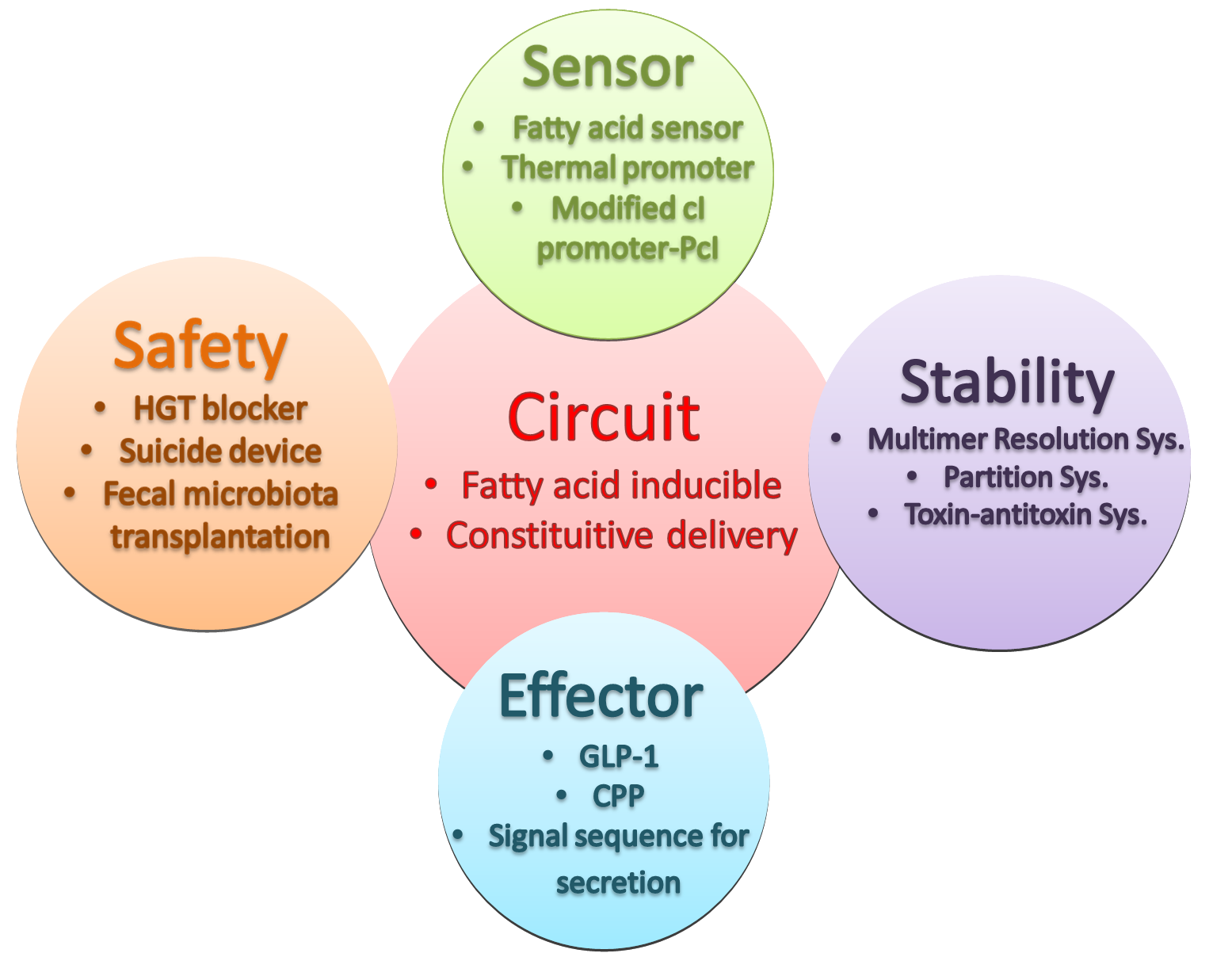Team:NTU-Taida/Project/Overview
From 2012.igem.org
Project Overview
A Demonstration of PEPDEX with a Mind-Altering Bacteria Delivering GLP-1
Here in our iGEM project, we aim to tailor a mind-altering bacterium that modulates our cognitive function and behavior as a demonstration of our PepdEx system. We choose a neuropeptide glucagon-like peptide-1 (GLP-1) as an effector to achieve these goals. As a versatile peptide, GLP-1 is first used in treatment of type 2 diabetes mellitus, while recent spotlight has been shot on its novel therapeutic applications in obesity and neurodegenerative diseases. It works on the satiety center in hypothalamus, suppressing appetite and thus leading to the change in eating behavior, and its neuroprotective role also serves in prevention or treatment of Alzheimer’s disease and Parkinson’s disease, etc. A fatty acid sensor FadR with a circuit of double repressors and quorum sensing module is conjugated with GLP-1 for inducible delivery adapting to the fluctuating gut environment in the case of anti-obesity use, while a thermal sensor is used for constitutive delivery of GLP-1 inside human body for protection of our central nervous systems and treatment of neurodegenerative diseases mentioned above. Together with the stability and safety device, adequate floral strains hosting these plasmids are guided into the intestine and begin normal colonization. Facilitated secretion by type II secretion signal sequences and promotion of penetration through intestinal mucosa by cell-penetrating peptide Penetratin results in fast administration of GLP-1 into the blood stream and quickly circulation to the targeted regions in brain. These bacteria then live lifelong as tiny factories with us, constantly communicate, adapt, and work for our health well-being.
 "
"


